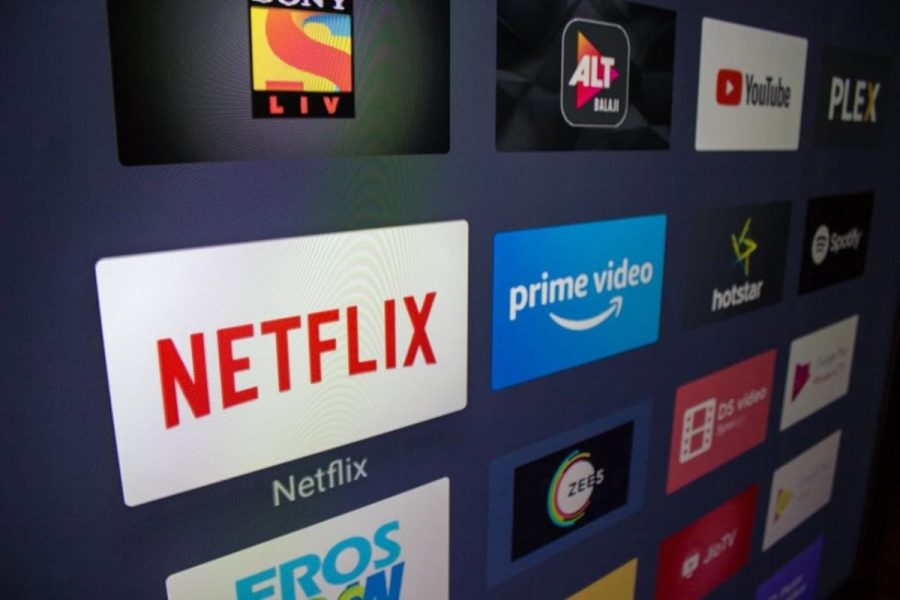
The big battle to get small regional films released on OTT

There are a wide variety of options when it comes to OTTs in India. However, hundreds of mainstream filmmakers, especially small-budget ones, struggle to get their films released on these platforms. So, what is the hurdle? How do some filmmakers manage to release their films on OTTs and even make money out of it?
It is not as if filmmakers can just approach an OTT platform and sign on a dotted line to get their films released. Well, that works only for big-budget films with huge star casts and a brand name. Small and medium-sized filmmakers have to struggle to get their films onboard OTT platforms.
Actor-producer-distributor Yogi Dwarakish says there are only two ways to get films released on OTTs. The first approach is to provide a presentation about the film with the cast, synopsis, budget and estimated release date and ask the OTT platform to quote a price. If the OTT platforms like the idea, they negotiate a price, and the money is released at different stages, as per the agreement.
The second way and the approach that most filmmakers take these days are to complete a film, build a lot of hype around it and then pitch it to OTTs. This obviously helps filmmakers to negotiate a better deal. The film first opens in theatres and after a stipulated time, it gets released on OTT.
Also read: Investment or gamble? Post-KGF, Kannada filmmakers plot pan-India films
The mode of payment for OTTs is either pay an upfront fee or agree to release the film on a Pay-Per-View (PPV) basis. It means the filmmaker gets a small amount as a fee for every hour a subscriber watches the content. The price paid to the filmmaker on a PPV basis is not uniform and it depends on various factors like cast, budget, content and most importantly, the language of the film, asserts Dwarakish.
Big OTTs are like distant stars in the sky
For a lot of filmmakers, big OTTs companies such as Amazon Prime, Netflix, SonyLiv, Zee5 and Disney+Hotstar, are like distant stars in the sky, and are clearly inaccessible. Even if filmmakers do get access to the decision-makers, they can expect a response after months and sometimes years.
There are many reasons for this delay. For one, the film may not have a great star cast, content, budget or even hype. Secondly, the platforms are approached by tens and hundreds of filmmakers every day and it is difficult for them to hear/watch the content in a single day. These issues have led many filmmakers to end up falling into the trap of fraudsters, who siphon money off from them by claiming that one needs to bribe these decision-makers to get their films to stream on these platforms.
Kannada film director K M Chaitanya says, “Some OTT platforms operate through agencies. A filmmaker will have to approach an agency who will then decide to pitch the film to these OTTs. In this case, agencies decide which film to pitch or not depending on their previous experience with the platforms and sometimes, good films are not even presented to the platforms.”
“There are around three agencies and we need to pitch our films to them first inorder to reach out to the big OTTs. It’s a big problem,” says Chaitanya.
Also read: OTT: Madhuri Dixit’s ‘Maja Ma’ tackles same sex love, but plays it safe
Box-office collection matters for OTTs
There are filmmakers who approach OTTs after their films have had a theatrical release. OTTs then look at the box-office collection of these films instead of the content. Niche films which may have an audience on OTTs are often shunned because they don’t mean ‘business’ to these platforms.
For the uninitiated, OTT platforms work as extra-revenue streams for filmmakers. Initially, filmmakers released their films in theatres, sold the satellite rights to a particular TV channel and made extra income by selling them to OTT platforms as well. However, now, big and powerful media networks in the country have come up with their own OTT platforms and they are purportedly arm-twisting filmmakers to pay a single price for satellite and OTT rights.
Kannada language films most hit in south India
Most Kannada filmmakers say Hindi, Tamil, Telugu and Malayalam films get more prominence than Kannada films by OTTs. However, OTT platforms are not to be blamed. Dwarakish says, “There is a dearth of people watching Kannada films on OTTs. A Kannada film is being watched in dubbed languages by others. However, Kannadigas enjoy watching a non-Kannada film in the original language as we are more cosmopolitan. The demand for Kannada language content is less, and hence the budget allocated to Kannada films by these big OTT platforms is also less.”
Also read: Kannada films increase focus on original content, but not everybody is happy
Independent filmmakers struggle even more. They must fight to get distributors and exhibitors to release their films in theatres and then struggle even more to release them on satellite TV and OTTs. Most Indie filmmakers agree that film festivals are the best places for them to showcase their movies and get access to OTT platforms.
There are a good number of smaller OTTs that are available for filmmakers to release their films. However, these platforms do not enjoy much exposure. Moreover, the filmmaker nor these small OTT platforms can market themselves on the same level as big guns in the industry. For now, small and medium-budget filmmakers, have to fight to get their movies on OTT and do so until an alternative, viable way emerges in the future.


